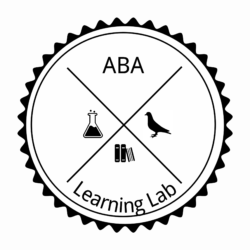Brian Kaminski, RBT, Graduate Student of Behavior Analysis
As public awareness for Autism Spectrum Disorder (ASD) has increased over the past decade, so to has media portrayals of individuals on the spectrum in television and film.
This past fall, ABC premiered The Good Doctor, a hospital drama following Dr. Shaun Murphy, a young surgeon on the autism spectrum.
Its public reception thus far? As recently noted in Vulture, Dr. Murphy & Co. are smashing TV ratings records. A lot of my friends and family have asked me what I think about the show and its popularity, and my response is always the same.
“Finally.”
“Finally there is a show that depicts the unique strengths of someone on the spectrum.”
While just one example, and a Hollywood portrayal at that, “The Good Doctor” reminds us all of one simple truth:
Kids with autism grow up.
With the overwhelming empirical support of early intensive behavioral intervention (EIBI), there has been a tremendous shift in resources to provide ABA services for children diagnosed with autism – and for good reason.
However, at times I fear that our older populations of adults on the spectrum get overlooked, and vast potential is left untapped and undiscovered.
Recent surveys indicate that only about 50% of young adults with ASD obtain employment after high school (Chiang, Cheung, Li, & Tsai, 2013; Shattuck, Narendorf et al., 2012).
When faced with such outcomes, parents with children on the spectrum might find themselves asking, “What does my child’s future look like?”
Despite these sobering employment statistics, few studies have centered on strategies to improve vocational skills of adults with ASD, indicating the need for additional research to improve employment outcomes (Bennett & Dukes, 2013).
A study by Lerman et al., 2015, looked to address this need, and did so in a remarkable way.
Two experiments were conducted in which 5 adults with ASD (19 to 23 years old) served as behavior technicians for young children with autism (3 to 7 years old).
The first experiment included instruction on the implementation of mand (request) training through incidental teaching.
The second experiment included instruction on the use of discrete-trial-training (DTT) with children who exhibited problem behavior.
The results from both experiments showed that behavioral skills training was effective for teaching adult participants the necessary behavioral procedures to teach children with autism. Additionally, the children in this study acquired skills and demonstrated generalization of skills as a result of training.
Most notably, social validity ratings suggested that some participants’ teaching was indistinguishable from that of individuals without ASD.
At the completion of the study, participants were asked about their experience on the job. One particular response truly resonated with me:
I am currently enjoying success at [location]. All 19 coworkers (two bosses and one supervisor included) are fantastic people who seem to be very tolerant in their demeanor, knowledgeable in their work, and direct in their feedback.
It helps me when they use ABA therapy on me. I also find myself making friends closer to my own age, improving my teaching skills and ability to interact with parents, growing more patient, and strengthening my work ethic since I have more of my day busy.
Other places of employment would not have the knowledge and tolerance of autism that an ABA clinic has.
I think that parents should find great encouragement and hope in the results of this study.
I think ABA service providers should explore more employment initiatives for adults with ASD.
And I think Hollywood should keep writing scripts about the lives of amazing men and women on the autism spectrum.
– To listen to a brief interview with Dr. Dorothea Lerman on the results of this study, click here.
References
Adults with ASD as Behavior Technicians Podcast (Lerman et al. 2015) [Audio blog interview]. (2015, June 6). Retrieved February 2, 2018, from https://www.youtube.com/watch?v=ruuJe9wm6mU.
Bennett, K. D., & Dukes, C. (2013). Employment instruction for secondary students with autism spectrum disorder: A systematic review of the literature. Education and Training in Autism and Developmental Disabilities, 48, 67–75.
Chiang, H. M., Cheung, Y. K., Li, H., & Tsai, L. Y. (2013). Factors associated with participation in employment for high school leavers with autism. Journal of Autism and Developmental Disorders, 43, 1832–1842.
Dalian, J. “The Good Doctor Is Breaking All Sorts of Ratings Records.” Vulture. October 27, 2017. Accessed February 3, 2018. http://www.vulture.com/2017/10/the-good-doctors-ratings-are-phenomental.html.
Lerman, D. C., Hawkins, L., Hillman, C., Shireman, M., & Nissen, M. A. (2015). Adults with autism spectrum disorder as behavior technicians for young children with autism: Outcomes of a behavioral skills training program. Journal of Applied Behavior Analysis, 48 (2), 233-256.
Shattuck, P. T.,Narendorf, S. C., Cooper, B., Sterzing, P. R., Wagner, M., & Taylor, J. L. (2012). Postsecondary education and employment among youth with an autism spectrum disorder. Pediatrics, 129, 1042–1049.

